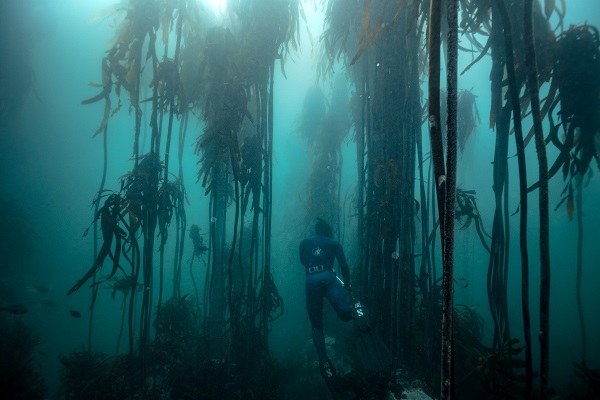This is an intriguing question which is asked regularly by visitors to the Kelp forests of the Cape, diving and observing these magical places. Many may think it’s the Sharks, the apex predators who play an important top down ecological role, others may believe it’s the kelp itself (ecklonia maxima) which creates the three dimensional ecosystem in which so many other species spawn and thrive, or perhaps the filter feeders such as the mussels and the sponges that make up such a huge biomass of the underwater forests. But the answer lies in a much smaller world invisible to the human eye, the most important organisms in the kelp forests are bacteria…
Bacteria are mind mindbogglingly numerous; studies have shown that a 1 meter square of a kelp bed may have up to 27 billion bacteria living in it! Although the biomass is relatively low due to their microscopic size their productivity is massive (>1000 times greater than their biomass). Here are three main reasons as to why Bacteria may well be the most important organism in the Kelp forests:
- Bacteria are hugely important in the break down of organic material such as kelp and sea grasses. They break the matter down into more digestible particles making it much easier for filter feeders to digest. This creates a huge increase in Nitrogen production in the system changing the Carbon to Nitrogen ratio from about 19:1 in fresh kelp matter to just 3:1 as the bacteria increase the Nitrogen cycle. Nitrogen is hugely important in the growth of primary producer such as algae which produce the food source for so many other species. It is estimated that bacteria supply 73% of the Nitrogen supply for the kelp forests growth.
- Bacteria colonize and break down the faeces of all the animals living in the kelp forests, which is mostly inedible waste. This allows the waste to be consumable once again, and also increases the nitrogen levels and therefore the productivity of the ecosystem. This process is known as the faecal loop, or the ‘poop loop’. The effectiveness and recycled productivity and energy of this process is almost as high as all the plants in the kelp forest combined…
- It was once believed that the filter feeders of the kelp forests depend mostly on the phytoplankton particles floating through on the tides and the currents as their main food source. However, it is now known that bacteria can be absorbed with an extremely high efficiency by filter feeders, approximately 68 %, making bacteria an extremely important food source along with phytoplankton and kelp particles for the filter feeders of the kelp forests.

0 Comments